Where to dig in?
You’ll find the best gardening forks include the Handtop Four-Tine Heavy Duty with solid steel construction, the Greenman Stainless Steel Border Fork featuring mirror-polished tines and a 20-year warranty, and the Tabor Tools Digging Fork with all-steel durability. Choose heavy-duty models with forged carbon steel tines for compacted soil, or precision border forks for delicate root work. Consider your soil type, garden size, and primary tasks when selecting between digging, compost, or specialized broadforks to discover which features matter most.
Understanding Different Types of Garden Forks
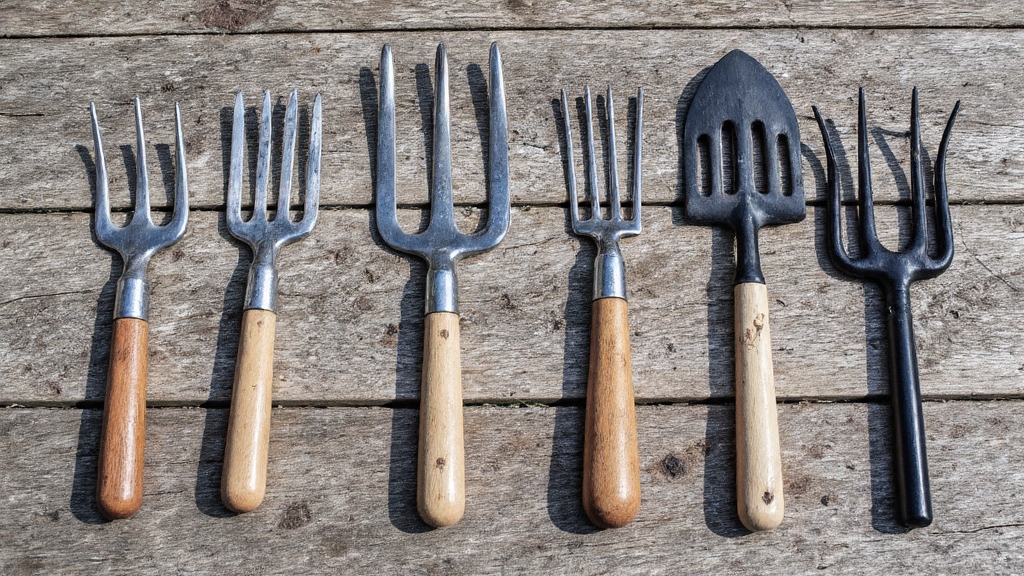
When you’re choosing the right gardening fork, understanding the different types available will help you match the perfect tool to your specific gardening tasks.
Heavy-Duty Options
For tough soil conditions and large garden areas, heavy-duty digging forks with square tines deliver the power you need.
Digging forks feature square tines that break compacted soil and turn large earth volumes effectively. These tools work best in expansive gardens with challenging soil conditions, such as silty soil that requires proper drainage maintenance for optimal plant growth.
Precision Tools
Border forks offer smaller, lighter construction that’s perfect for raised beds, transplanting, and working around tender roots. Hand forks provide compact, handheld convenience for weeding and aerating small areas.
Specialized Functions
Spading forks use flat, wide tines for lifting sod and edging work. Compost forks have curved tines designed specifically for turning compost heaps and moving organic materials efficiently. Broadforks feature a wide head with multiple tines specifically designed for turning undisturbed soil across larger areas.
Each fork type serves distinct purposes, so you’ll want to evaluate your garden’s size, soil type, and primary tasks before making your selection.
Essential Features That Make a Quality Fork
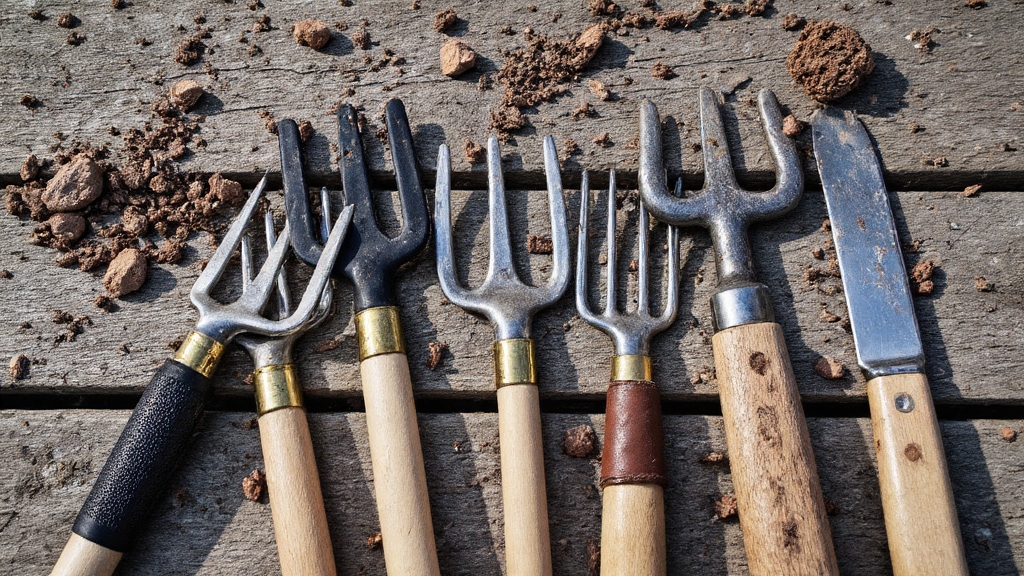
While all garden forks might look similar at first glance, the quality differences become clear once you start digging into tougher soil conditions.
Material Construction
You’ll want high-strength carbon steel or forged carbon steel tines that resist bending under pressure. Stainless steel options offer excellent rust resistance for long-term durability.
Handle Design
Look for ergonomic handles with D-shaped grips that reduce hand strain. While hardwood handles provide tradition, steel or fiberglass options offer better durability and weather resistance. The handle should be long enough to provide proper leverage and reduce back strain during extended use.
Tine Configuration
Four-prong forks work best for versatile garden tasks, with proper spacing that turns soil without excessive clumping. Sharp, abrasion-resistant tines should penetrate hard ground easily. When choosing garden tools, it’s essential to consider the kink-free features seen in top hoses, as flexibility can improve your gardening efficiency.
Build Quality
Choose one-piece or double-riveted construction to eliminate weak points, ensuring your fork handles heavy-duty tasks reliably.
Top-Rated Garden Fork Models
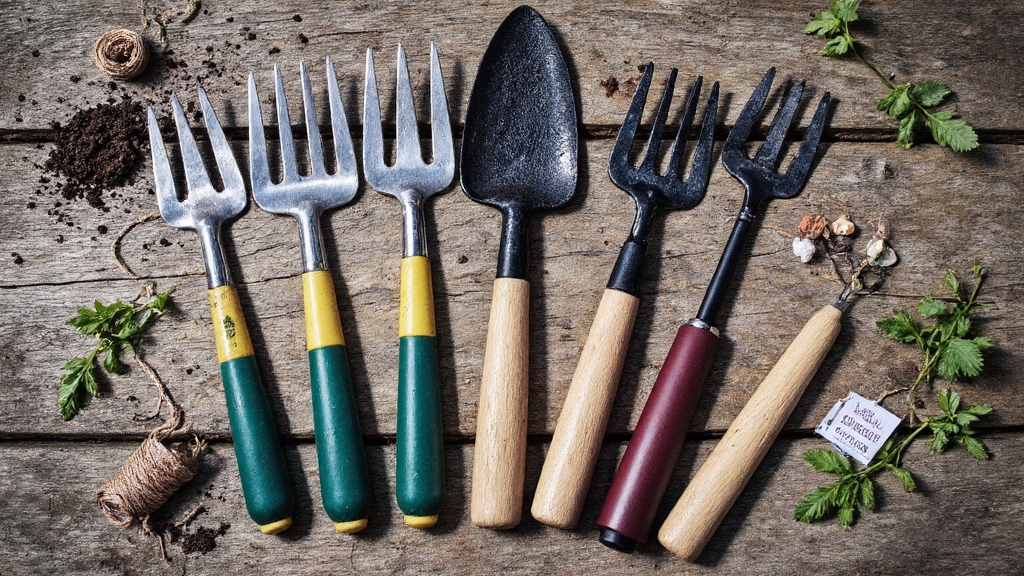
Several outstanding garden forks have earned recognition from professional reviewers and experienced gardeners, each offering distinct advantages for different gardening needs. Brands like Kent and Stowe are celebrated for their versatile tools, adding options for those seeking high-quality craftsmanship.
Professional reviewers and seasoned gardeners have identified exceptional garden forks, each designed for specific soil challenges and gardening applications.
The top-rated models that’ll transform your soil work:
- Handtop Four-Tine Heavy Duty Garden Fork – Features solid one-piece steel construction with a fiberglass handle, making it perfect for lifting mulch and digging root vegetables without bending or breaking.
- Greenman Stainless Steel Border Fork – Offers mirror-polished, high-carbon steel tines with a 20-year warranty, earning 4.5 stars from BBC Gardeners’ World Magazine for exceptional penetration in stony ground.
- Tabor Tools Digging Fork – Bob Vila’s top pick, this all-steel construction excels at breaking compacted soil with unmatched durability.
- Rome Wild Garden Fork – Innovative arrow-shaped design with 115° angled handle provides superior control in tight spaces. For specialized tasks, consider a six-tine manure fork that offers curved tines specifically designed for scooping and lifting materials like compost or hay.
Heavy-Duty Options for Challenging Soil Conditions
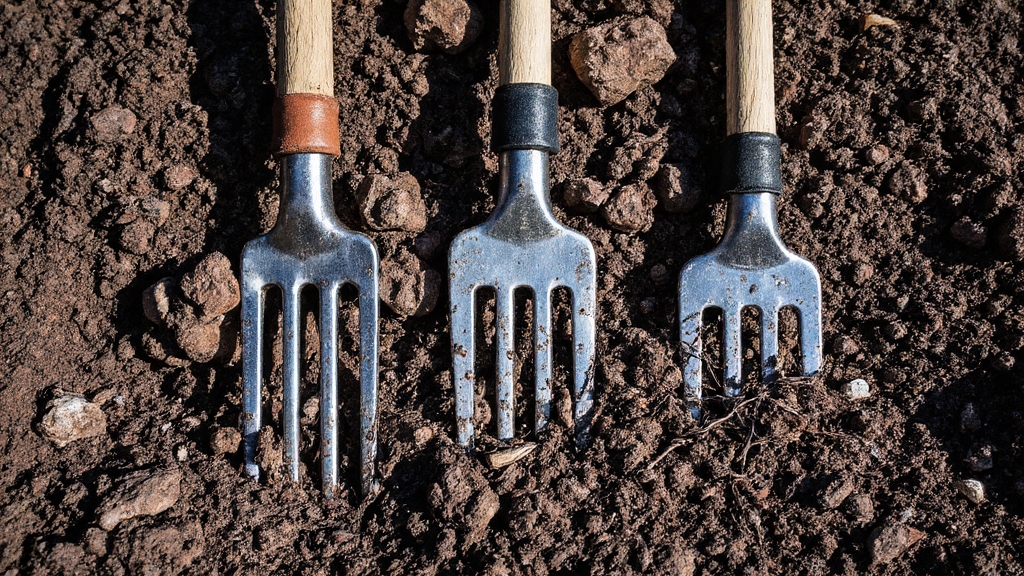
Though standard garden forks work well in loose, cultivated soil, challenging conditions like compacted clay, rocky terrain, and drought-hardened earth demand tools built for serious durability and penetrating power.
Construction Features That Matter
Heavy-duty forks use forged steel heads with four robust tines that won’t bend under pressure. Look for carbon steel construction with hammer finishing and powder coating, which resists corrosion and abrasion. Premium ash or fiberglass handles outperform standard wood by resisting weathering and splitting. Additionally, some non-selective herbicides can be used to prepare difficult garden areas by eliminating extensive weed coverage before tackling with manual tools.
Performance Benefits
Heavier models around 1.6 kg penetrate tough soil with less effort from you. Sharp, pointed tines break through hard, dry earth effectively. The balanced design distributes weight evenly, reducing strain during extended use. Proper tine spacing balances soil penetration with efficient turning ability while preserving soil structure.
Top Heavy-Duty Models
Consider the Wilcox All Pro 102S, Spear & Jackson Neverbend Professional, or Truper 30293 Tru Pro for maximum durability.
Choosing the Right Fork for Your Gardening Needs
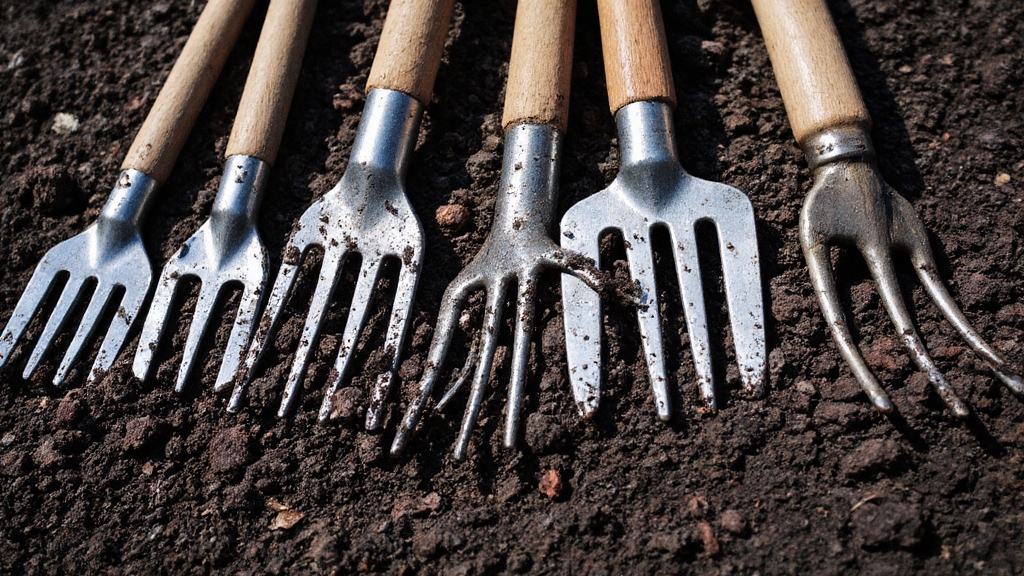
Selecting the right garden fork transforms your soil work from a struggle into an efficient process that saves time, energy, and protects your plants. You’ll need to match your fork choice to your specific gardening tasks, soil conditions, and physical comfort requirements.
Consider these key factors when choosing your garden fork:
- Soil type and condition – Heavy clay needs sharp, tapered tines, while loose soil works well with broader spacing.
- Garden space size – Border forks suit tight spaces, broadforks handle larger areas efficiently. For those looking to enhance their modern spaces with indoor plants, similar considerations can guide you in choosing the right variety.
- Primary tasks – Compost forks excel at moving organic materials, digging forks break compacted ground.
- Your physical needs – D-handles provide better leverage, proper length prevents back strain.
Match tine material and spacing to your soil’s hardness, ensuring comfortable, effective gardening sessions. Stainless steel tools are easier to maintain and clean, slide through soil smoothly, and do not accumulate mud.
Maintenance Tips for Long-Lasting Performance

When you invest in quality gardening forks, proper maintenance becomes the key to protecting that investment and ensuring decades of reliable performance. Following a consistent care routine will keep your tools sharp, rust-free, and ready for any garden task. Versatile tools like the Fiskars 4-Claw Deluxe Stand-Up Weeder demonstrate the importance of choosing the right equipment for specific tasks.
| Maintenance Task | Frequency |
|---|---|
| Clean after use | Every session |
| Oil metal parts | Monthly |
| Inspect for rust | Weekly |
| Sharpen tines | As needed |
Start by removing soil and debris immediately after each use. Scrub stubborn dirt with a wire brush, then rinse thoroughly. Dry completely before applying a thin coat of mineral oil to metal surfaces. Store your fork in a dry, ventilated space, hanging it to avoid ground contact. Always wash tools that have been exposed to diseased plants to prevent spreading problems throughout your garden.
Frequently Asked Questions
Can I Use a Garden Fork to Harvest Root Vegetables Like Potatoes?
Yes, you can definitely use a garden fork to harvest potatoes and other root vegetables. Garden forks are actually excellent tools for this task because their blunt prongs gently lift tubers without causing damage or bruising.
You’ll find they work like a sifter, shaking dirt off potatoes as you lift them. This method results in fewer damaged crops compared to sharp spades or shovels.
What’s the Difference Between a Garden Fork and a Pitchfork?
You’ll notice garden forks have short, thick, flat tines designed for digging and soil work, while pitchforks feature longer, curved, thinner tines for moving hay and loose materials. Garden forks use shorter handles with D-grips for leverage during digging, but pitchforks have long handles for lifting and throwing.
Garden forks work best for soil preparation, while pitchforks excel at moving organic matter.
Are Left-Handed Garden Forks Available or Do I Need Special Features?
Yes, you can find left-handed garden forks, though they’re less common than standard versions. Specialty retailers like Lefty’s offer ergonomically designed handles with curves oriented for left-hand use. These tools feature adjusted weight distribution, modified tine angles, and improved grip positioning.
If specialized forks aren’t available, you can use ambidextrous designs with neutral handles or removable grips that adjust for left-handed comfort and efficiency.
How Much Should I Expect to Spend on a Quality Garden Fork?
You’ll spend $40-70 for a quality garden fork that handles regular use well. Entry-level forks under $40 work fine for light tasks, while premium models over $70 offer forged steel construction for heavy-duty work.
Mid-range options provide the best balance of durability, ergonomics, and value. Consider your soil type and frequency of use when deciding your budget.
Can Garden Forks Damage Underground Sprinkler Systems or Utility Lines?
Yes, garden forks can damage underground sprinkler systems and utility lines. You’ll risk puncturing pipes, severing electrical conduits, or hitting gas lines when digging deeper than 12 inches.
Before using your fork, locate underground systems with maps or detection devices. Insert tines slowly and vertically to feel for obstructions. Mark known line locations clearly, and consult professionals when you’re uncertain about underground infrastructure.
Conclusion
You’ve now got the knowledge to select the perfect gardening fork for your specific needs. Consider your soil type, garden size, and physical capabilities when making your choice. Remember to maintain your fork properly with regular cleaning and sharpening to guarantee years of reliable service. With the right fork in hand, you’ll tackle even the toughest gardening tasks with confidence and achieve better results in your garden.

